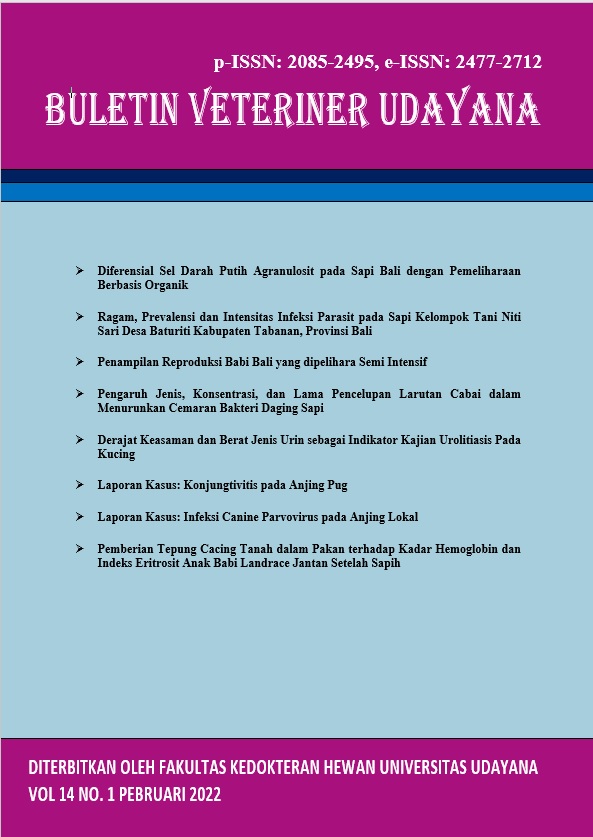THE EFFECT OF TYPE, CONCENTRATION, AND DURATION OF SUBMERSION IN CHILI SOLUTION TO REDUCE BEEF BACTERIAL CONTAMINATION
Abstract
Indonesia has a variety of culinary diversity. One of the basic ingredients commonly used as a culinary is beef. Beef is very susceptible to bacterial contamination. One of the herbs that can be used as an antibacterial is chili. Chili has an active compound that is known as Capsaicin. This research aims to determine the effect of type, concentration and duration of submersion in chili solution into reducing bacterial contamination in meat. This research used Randomized Complete Block Design (RCBD) with 3 x 2 x 3 Factorial Factor, 4 types of chilli pepper (chilli pepper, curly pepper, and large red pepper), 2 chili solution concentration (25% and 50%), and 3 duration of submersion (5, 10, and 15 minutes). Each combination of treatments, the study will be repeated 2 times, so the total number of samples used was 38 samples. The variables that will be measured in this study are bacterial colonies (ALTB) grown on the Nutrient agar media. The results showed that chili solution and duration of submersion has a significant effect (P <0.05) in reducing bacterial contamination in beef while the concentration of chili solution does not have a significant effect (P>0,05).
Downloads
References
Cahyari K, Salvoroni A. 2015. Pengaruh Konsentrasi Buah Cabai merah (Capsicum Annum L.) dan buah cabai rawit (Capsicum Frutescens L.) dalam produksi biogas dari sampah organik. Jurusan Teknik Kimia, Fakultas Teknologi Industri, Universitas Islam Indonesia, Yogyakarta.
Komariah, Arif I, Wiguna Y. 2004. Kualitas fisik dan mikroba daging sapi yang ditambah jahe (Zingibr officinale Roscoe) pada konsentrasi dan lama penyimpanan yang berbeda. Media Peternakan. Fakultas Peternakan IPB, Bogor.
Madigan MT, Martinko JM. 2005. Brock biology of microorganisms. 11th Ed., Prentice Hall, New Jersey.
Musfiroh I, Mutakin M, Angelina T, Muchtaridi M. 2013. Capsaicin level of various capsicum fruits. Faculty of Pharmacy. Padjajaran University, Bandung.
Pelczar MJ, Chan ECS. 1988. Dasar-dasar mikrobiologi I. Jakarta: Penerbit Universitas Indonesia
Rodiah, Kudera IN, Binti G, Shamdas N. 2017. Efektivitas antibakteri ekstrak daun cabai rawit (CapsicumFrustescen L.,) terhadap pertumbuhan bakteri propionibacterium acnes dan implementasinya sebagai media pembelajaran. Biol. 5: 10-19.
Silvia, Wilkinson, Kim, Chueh, Wu, Morre D, Morre J. Isolation and identification of a protein with capsaicin-inhibited NADH oxidase activity from culture media conditioned by growth of hela cells. Departement of Foods and Nutrition, Purdue University, Indiana.
Zahra A. 2012. Analisis sumberdaya dan konsumsi daging sapi di Indonesia Tahun 2005-2010. Skripsi. Fakultas Ekologi Manusia, Departemen Gizi Masyarakat, Institut Pertanian Bogor.





